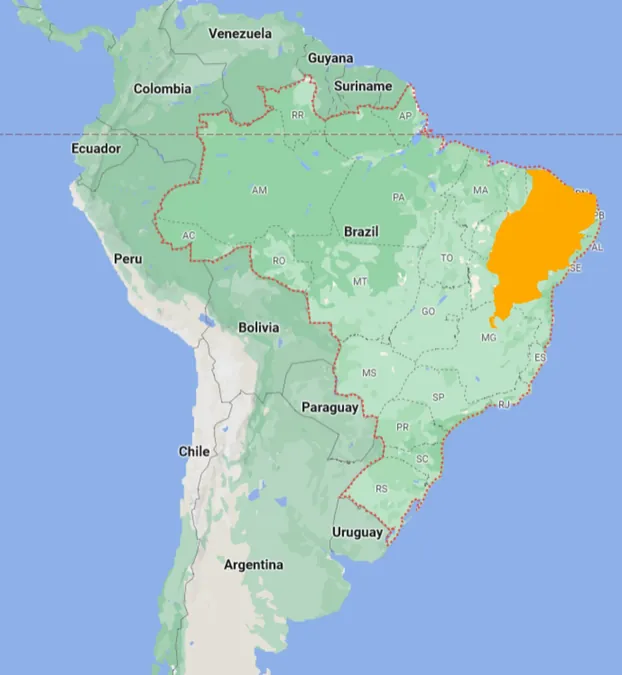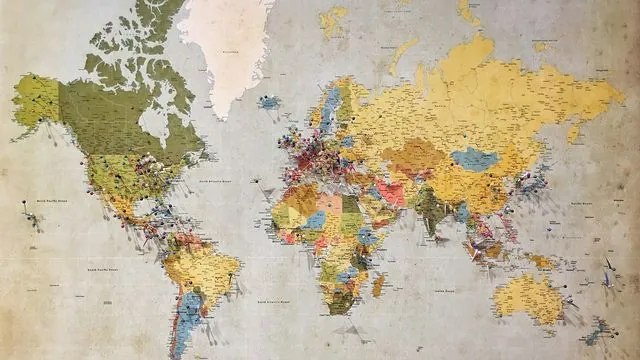
Breakthrough Methods Unveil Hidden Diversity of Bee Species in Brazil’s Unique Caatinga Biome
2025-03-25
Author: Li
Recent groundbreaking research from Portugal’s Interdisciplinary Center for Marine and Environmental Research (CIIMAR) has illuminated the path for identifying bee species across diverse ecosystems, with a particular focus on Brazil’s unique Caatinga biome.
Bees and other pollinators are vital to maintaining healthy ecosystems and play an essential role in the reproduction of plants. In a world where human food production is heavily reliant on pollination, these diminutive yet powerful creatures are facing a multitude of threats, including pollution, pesticide use, intensive agricultural practices, water scarcity, deforestation, and climate change. Understanding and preserving their diversity is more crucial than ever for their survival and, by extension, the stability of global food systems.
According to the Food and Agriculture Organization of the United Nations (FAO), over 75% of the world’s fruits and seeds crucial for human consumption rely on pollination. Thus, innovative approaches that focus on identifying, mapping, and conserving these vital species are essential as we navigate the challenges posed by modern agricultural practices.
A pivotal review article titled "Barcoding the Caatinga biome bees: a practical review," published in Molecular Biology Reports, reports significant advancements in this field of study. Conducted by notable researchers from CIIMAR's Ecosystem Monitoring and Sustainability group—Pedro Rodrigues, Cláudia Teixeira, Laura Guimarães, and Nuno Ferreira—the study has pioneered and refined tools for the identification of bee species, making these resources accessible worldwide.
The focal area for this research is the Caatinga biome—an exclusive Brazilian ecosystem covering approximately 826,411 km², characterized by its remarkable flora and fauna. By integrating traditional methods of morphological identification with advanced molecular techniques and DNA barcoding, this study has substantially augmented our understanding of the bee species inhabiting this unique habitat.
The researchers were able to identify an impressive 75 additional species and nine new genera compared to previous identifications from 25 years ago, marking a significant leap in our knowledge. However, the team cautions that their findings may not fully encompass the total biodiversity that exists, emphasizing the need for further exploration and cataloging efforts.
This modern approach to species identification plays a crucial role in conserving the Caatinga biome by enabling the identification of undiscovered species. As Teixeira notes, the methodology is not just beneficial for current understanding but also lays a robust foundation for future research aimed at comprehending local biodiversity.
Moreover, this research holds broader implications. Accurate species monitoring and identification are essential to tracking the trends affecting bee populations, especially in the face of climate change. “By highlighting the ecological services provided by pollinators, like food production and vegetative diversity, this work seeks to underscore the importance of these species to both ecosystems and society,” Teixeira stresses.
The Caatinga biome, with its semi-arid climate and vegetation adapted to extreme drought and sporadic heavy rainfall, is not only ecologically significant but also a treasure trove of undiscovered species. Despite its unique biodiversity, many organisms within this biome remain unclassified, necessitating extensive research to uncover their roles within this delicate ecosystem.
Armed with this new information, researchers and conservationists can better advocate for the preservation of one of Brazil’s most distinctive ecological regions, ensuring that its biodiversity thrives for generations to come. As we unveil the hidden diversity of these pollinators, we move closer to understanding and safeguarding the vital services they provide to our world.

 Brasil (PT)
Brasil (PT)
 Canada (EN)
Canada (EN)
 Chile (ES)
Chile (ES)
 Česko (CS)
Česko (CS)
 대한민국 (KO)
대한민국 (KO)
 España (ES)
España (ES)
 France (FR)
France (FR)
 Hong Kong (EN)
Hong Kong (EN)
 Italia (IT)
Italia (IT)
 日本 (JA)
日本 (JA)
 Magyarország (HU)
Magyarország (HU)
 Norge (NO)
Norge (NO)
 Polska (PL)
Polska (PL)
 Schweiz (DE)
Schweiz (DE)
 Singapore (EN)
Singapore (EN)
 Sverige (SV)
Sverige (SV)
 Suomi (FI)
Suomi (FI)
 Türkiye (TR)
Türkiye (TR)
 الإمارات العربية المتحدة (AR)
الإمارات العربية المتحدة (AR)